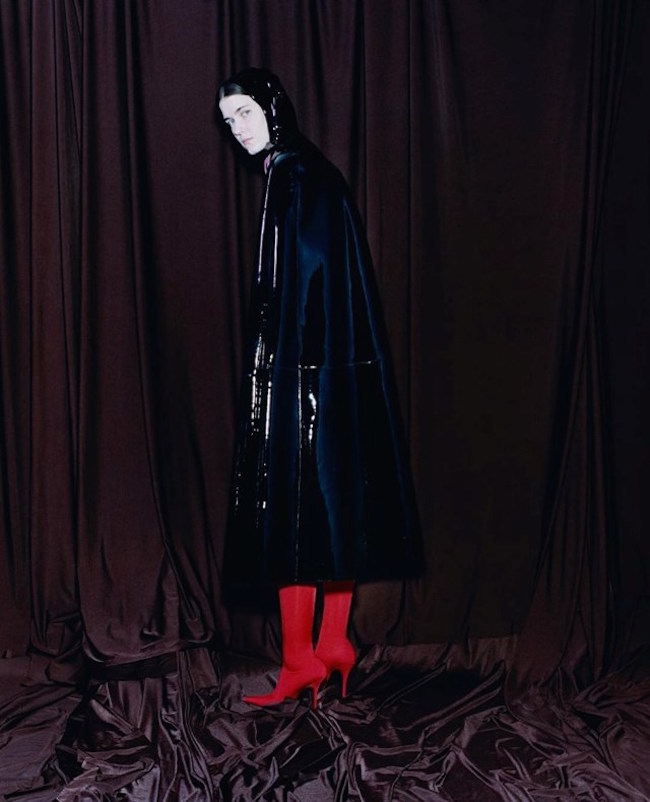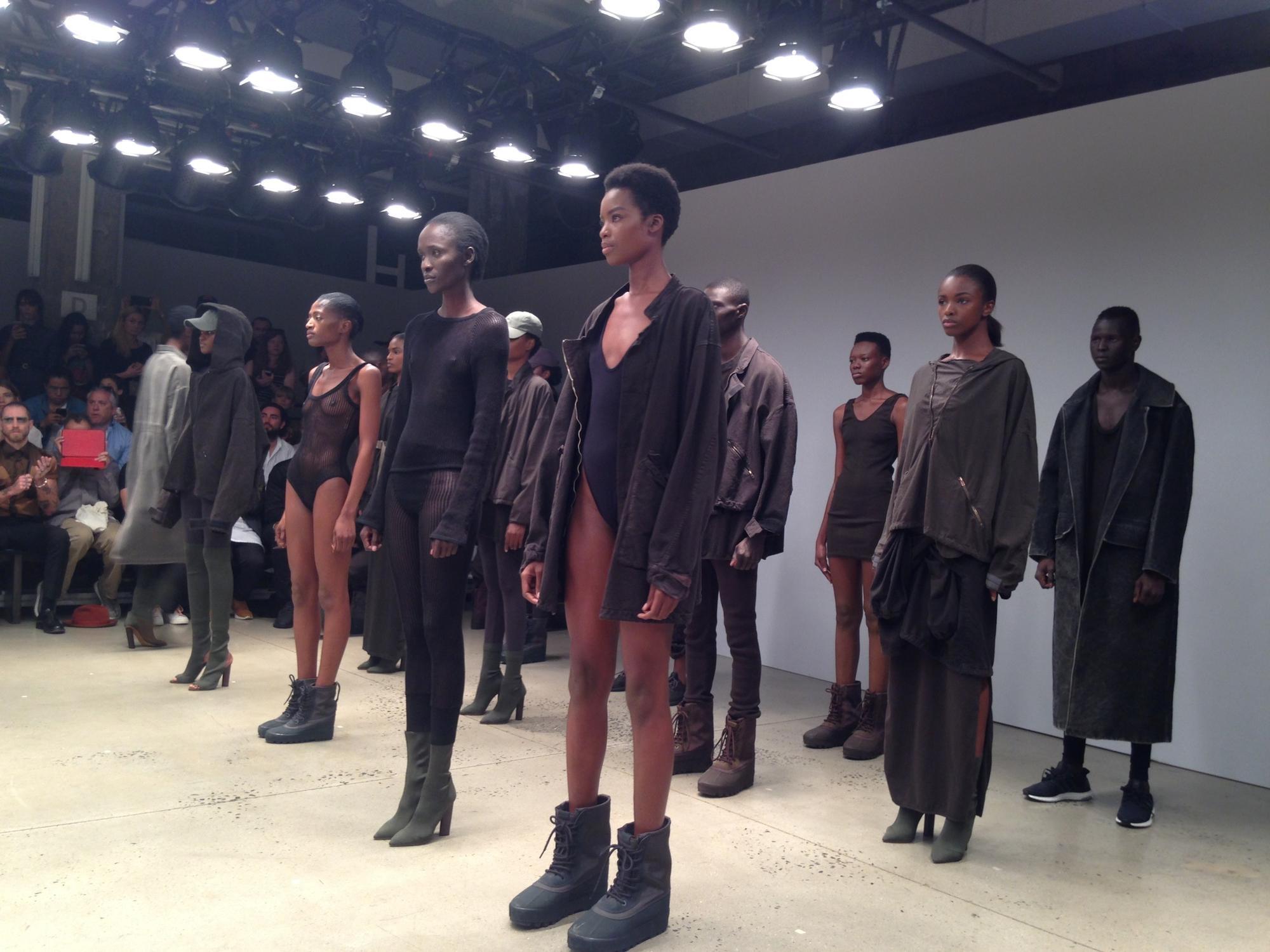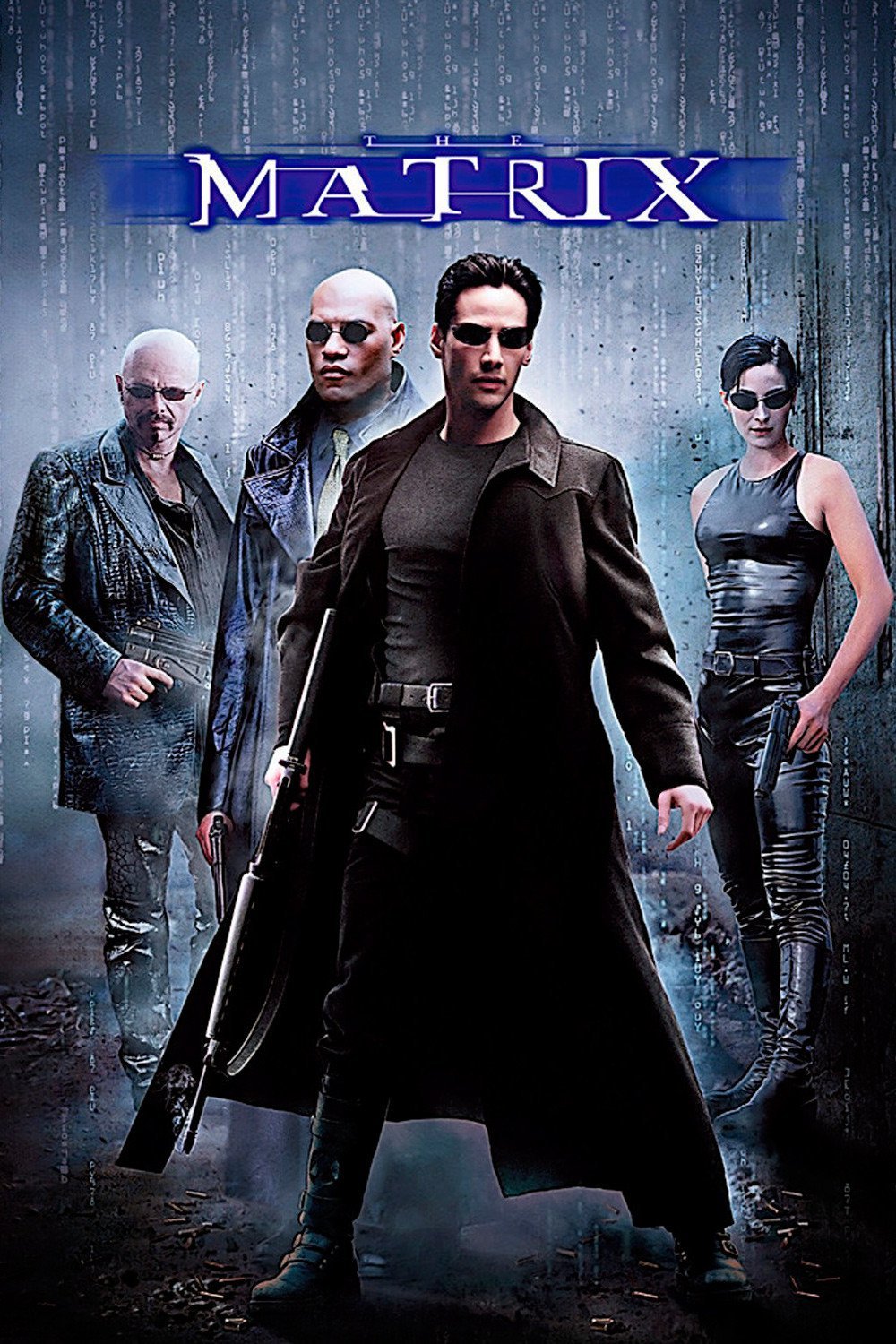Exactly 18 years after we first entered The Matrix, its staple looks — awkward powersuits, biz-cas trench coats, and shrunken oval shades — can be found everywhere from the streets of Bushwick to the runways of Paris. The film’s themes of oppression and resistance, too, feel extremely prescient from a Trump-era perspective. (Just this week republicans ramped up their push to allow internet service providers to sell the public’s browsing history.) Fashion, as Bill Cunningham used to say, is really just a reflection of our times.
And the runways are holding up a very shiny mirror. Kanye West’s post-apocalyptic Yeezy sweaters and combat boots are straight out of Zion. We have a literal fetish for leather and latex. Vetements/Balenciaga mastermind Demna Gvasalia has become synonymous with dystopian officecore swag. He is equally good at oversized mute-tone hoodies and luxurious trench coats, both of which feature heavily in his post-modernist fusion of new/old and ugly/cool. Commodifying bleakness clearly comes naturally to designers who grew up in ex-Soviet countries rumored to have spent $1B on Matrix-like mind control programs. At Tbilisi Fashion Week last fall, Georgia’s other fashion mastermind George Keburia showed his collection in a grey-carpeted conference room in the Holiday Inn. He is constantly designing new versions of sunglasses that look like this.
Not everyone loved the post-industrial dystopian costumes of The Matrix when the film was released in 1999. Interior designer Karim Rashid, who is known for dressing in the same cotton candy pink as the blobjects he makes, was particularly disenchanted by The Matrix‘s aesthetic combo of hulking wingback armchairs and charcoal #officecore essentials. ”I found the movie not the least bit prescient; it was even dated,” the prolific interior designer told the New York Times after hearing his team praise the film. ”We are looking at a future supposedly created by artificial intelligence — one of bad suits, ill-fitting coats, and cheesy shades? Is that the best they can do?”
The fashion world, meanwhile, quite enjoys a good ill-fitting coat or pair of cheesy shades. John Galliano — who designed the cyberpunk sci-fi costumes in The Fifth Element two years earlier — presented his futurist fall/winter 99 collection for Dior Haute Couture just four months after The Matrix hit cinemas. Galliano told Vogue it was “deeply inspired” by the film, which the liquid latex pants and Women in the Red Dress made brutally evident. Hedi Slimane’s iconic 2000s tenure at Dior Homme was heavy on baby-skinned Sad Keanus in aerodynamic suits and sprayed-on leather. Louis Vuitton and Givenchy dressed models like croc-clad Matrix cast members in 2012 and 2014. Even the process of actually making the Matrix costumes feels modern today. “Quite often we’re using 3D printing,” costume designer Kym Barrett explained of fashioning Trinity’s PVC jumpsuit, Neo’s green-tinged skinny suits, and his ecclesiastical, Chinese-inspired coat. “We’re using all kinds of new textile technologies. We’re inventing machines to do things.” Those textiles, however, were often simply cheap PVC. Neo’s iconic leather coat was actually a wool blend that Barrett picked up in New York for $5 a yard.

In an essay for Vogue in 2015, Sarah Mower wrote that fashion’s 90s nostalgia could be explained by basic math. “All you do is take today’s date, 2015, and subtract 25 (the age of today’s rising designers). Result: 1990, of course!” A similar equation could account for the enduring appeal of The Matrix‘s sartorial codes. But a lot has changed since 2015. Donald Trump is the president, his “fine-tuned machine” is an extremely oppressive one that literally operates in the dark while deploying techniques to control our access to true information. The Matrix essentially encourages people to fight back against alternative facts and autocratic rule. When Bill Clinton was president in 1999, things didn’t look quite so dire, but there was still a sense of deep anxiety about the era. Remember when we all thought computers would crash and the world would end?

There are also less depressing reasons to re-enter The Matrix in 2017. In the 18 years since the film was released, its directors Lana and Lilly Wachowski have come out as transgender and encouraged fans to critique The Matrix through this lens. “This is a cool thing,” Lilly said of the response to her coming out, “because it’s an excellent reminder that art is never static.” The Matrix takes an approach to gender that still appears progressive today. Trinity might wear the catsuit and Neo the pants, but the characters often look like exactly the same person. Switch, a crewmember on Nebuchadnezzar, was supposed to be played by two androgynous actors, one male and one female. Gender-bending fashion is not having a moment but rather changing the entire industry. Mainstream brands like Zara now include gender-neutral collections while the runways of high-end designers are increasingly going co-ed.
2017 might be increasingly looking like Zion, but whether it’s Kanye in a leather skirt or girls wearing suits to prom, we can still define ourselves within it. Protest fashion is hardly limited to political t-shirts and pussy hats.
Credits
Text Hannah Ongley
